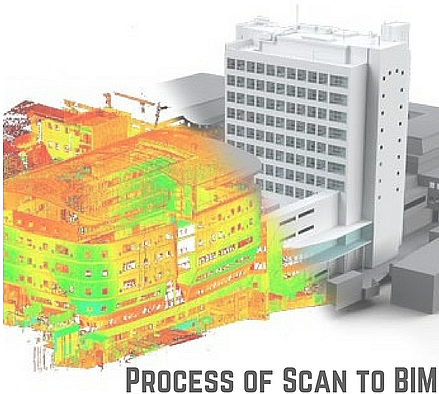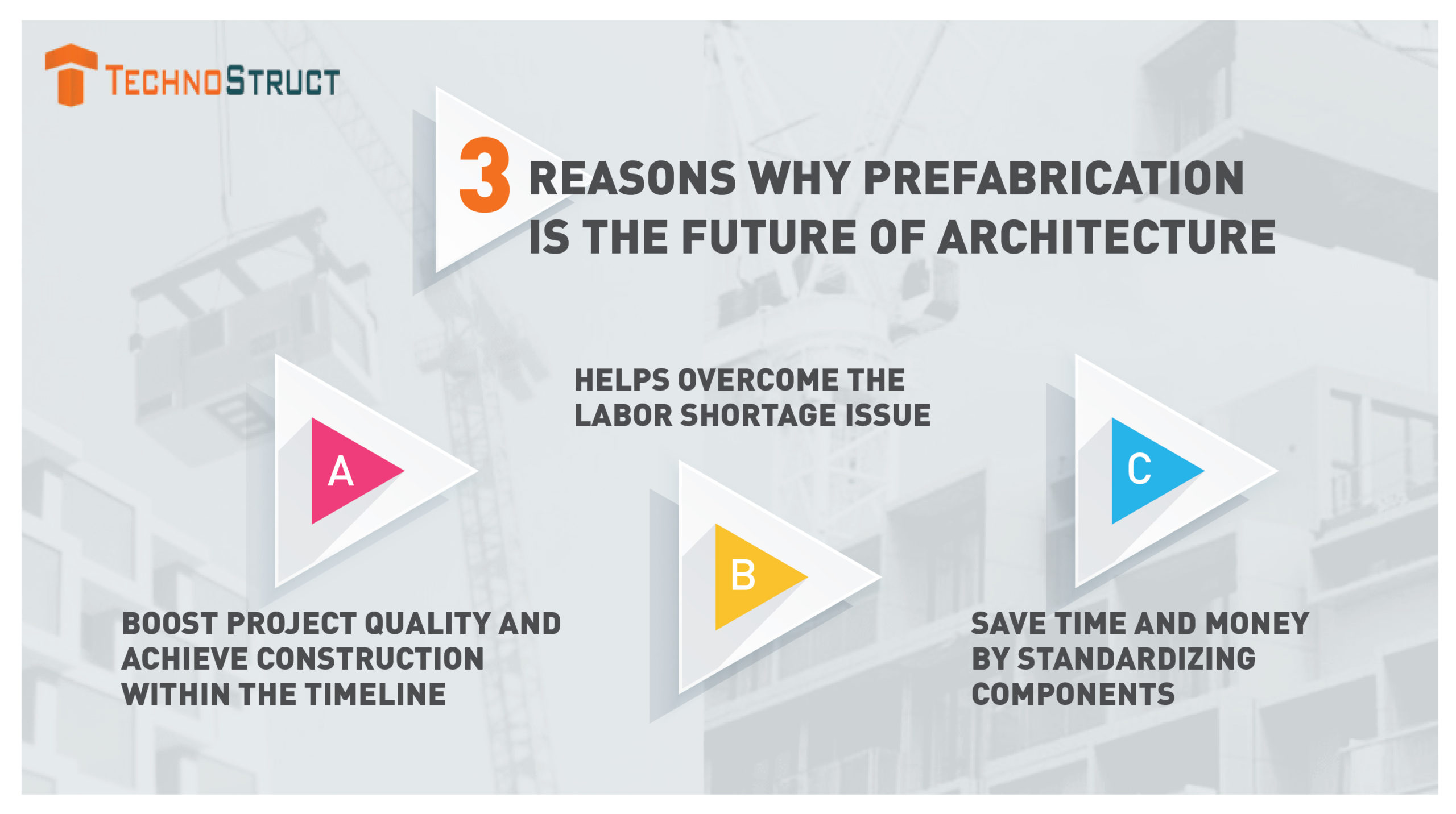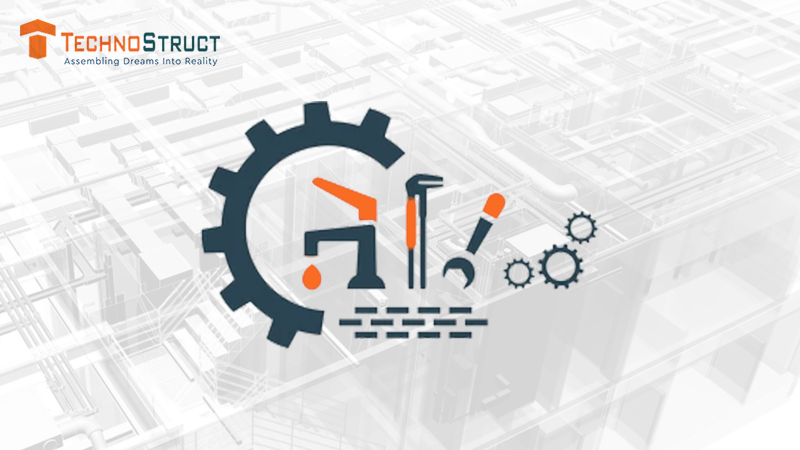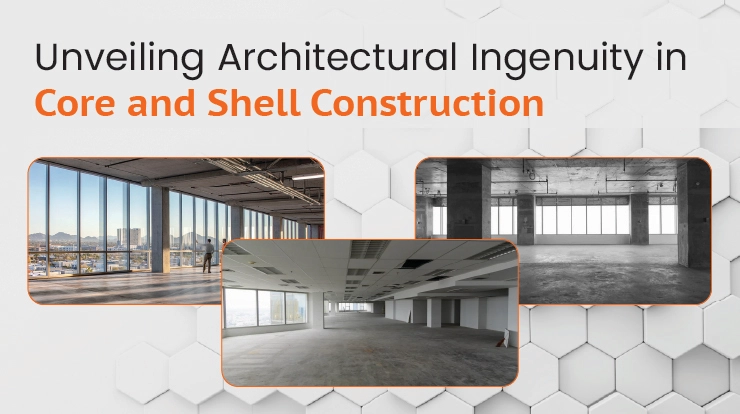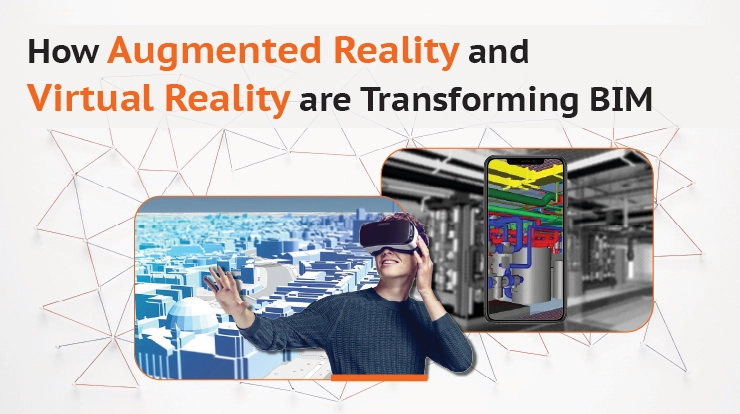
Imagine donning a pair of sleek glasses and stepping onto a construction site. Watching as an entire building springs to life before your eyes. Not as a blueprint on paper, but as a three-dimensional marvel dancing in the real world. This is not science fiction; this is the power of Augmented Reality (AR) and Virtual Reality (VR) revolutionizing the world of BIM.
Welcome to a realm where creativity meets concrete, innovation paints the future, and reality and imagination converge in a symphony of digital wonder. In this blog, we’ll embark on a journey through the intriguing landscape of AR and VR in BIM and explore how these technologies are reshaping the construction industry. Making it more immersive, more efficient, and safer than ever before.
BIM: A Digital Revolution
BIM Defined – BIM is not just a tool; it’s a collaborative process that utilizes intelligent 3D models to provide insights and tools for effective planning, design, construction, and management of buildings and infrastructure. Its adoption has significantly improved communication among stakeholders, leading to more streamlined workflows and reduced errors.
The Evolution of the BIM 3D Model – Initially, BIM focused on 3D modeling, but it has evolved to include 4D (time), 5D (cost), and 6D (sustainability) dimensions. This evolution laid the groundwork for the integration of AR and VR, enhancing BIM’s capabilities even further.
AR in BIM
AR represents a groundbreaking technological integration, enhancing the efficiency of on-site construction processes. By seamlessly overlaying digital information onto the physical environment, AR provides construction workers with a tool for real-time visualization of BIM models, revolutionizing the way construction professionals interact with their workspaces, with accuracy.
The real-time nature of AR ensures that adjustments and modifications can be made promptly, contributing to increased project agility. In essence, augmented reality emerges as a transformative force in the construction industry, not only enhancing precision in component placement but also fostering collaborative teamwork and reducing the likelihood of errors, thereby elevating the overall construction experience.
So, here a question arises: How does AR bring digital blueprints to life, helping architects and engineers visualize their designs in the actual environment where they’ll stand?
With AR, architects, engineers, and contractors can gain an unparalleled understanding of their projects. They can detect potential clashes, evaluate design choices, and even simulate different lighting conditions or materials – all in real-time and the real world.
However, the magic doesn’t stop there. AR can also revolutionize on-site construction. Workers can access vital information about their tasks by simply looking at the construction elements. How much reinforcement is needed for that column? Where should the plumbing go? AR provides instant answers, reducing errors and speeding up the building process.
| Also Read : How VDC has transformed the face of Architecture, Design, and Construction?
Benefits of AR in BIM
Augmented Reality (AR) offers several benefits when integrated with Building Information Modeling (BIM). BIM is a digital representation of the physical and functional characteristics of a building or infrastructure, while AR enhances the real-world environment with computer-generated information. Here are some benefits of using AR in BIM:
Visualization and Communication
- AR allows stakeholders to visualize BIM models in the real world. This can aid in better understanding the design and spatial relationships between elements.
- AR enables more effective communication among project teams by overlaying digital information onto physical elements. This can facilitate collaboration and reduce the chances of miscommunication.
On-Site Construction Assistance
- AR can guide construction workers by overlaying BIM data onto the physical construction site. This can help ensure that elements are placed correctly and according to the design specifications.
- AR can be used for on-site quality assurance by comparing the actual construction progress with the BIM model. Also, any kind of deviation from the plan can be identified and addressed promptly.
Design Review and Simulation
- AR allows for real-time design reviews by superimposing 3D models onto the physical space. Designers and clients can experience the proposed design in context, leading to more informed decision-making.
- AR can simulate various design scenarios, such as lighting conditions, airflow, and structural stability. This helps in analyzing the impact of different factors on the building’s performance.
Maintenance and Facility Management
- AR can overlay maintenance information, equipment specifications, and other relevant data onto physical assets within a building. This aids facility managers in efficiently managing and maintaining the infrastructure.
- AR can be used for training personnel on maintenance procedures by overlaying step-by-step instructions onto equipment or building components.
Client Engagement
- AR enhances client presentations by allowing clients to interact with BIM models in a more immersive way. This can improve client understanding and satisfaction.
- AR can be leveraged for marketing purposes, allowing potential buyers or tenants to experience a property before it is constructed. This can be particularly useful in real estate and architecture.
Cost and Time Savings
- AR can help detect design or construction errors early in the process, reducing the need for costly corrections later.
- By providing real-time information and facilitating communication, AR can contribute to more efficient project management, potentially reducing overall project timelines.
Integrating AR with BIM enhances collaboration, improves decision-making, and adds a layer of interactivity to the construction and building management processes. As technology continues to advance, the synergy between AR and BIM is likely to play a crucial role in the construction industry.
VR in BIM
Virtual Reality (VR) has revolutionized the field of BIM by providing an immersive and interactive experience for architects, engineers, and stakeholders. VR enables users to step into a three-dimensional representation of the building design, allowing them to explore every detail and spatial arrangement, enhancing collaboration and communication among project teams.
VR in BIM facilitates real-time design reviews, enabling instant feedback and identification of potential issues. This not only streamlines the decision-making process but also ensures that the final construction aligns with the envisioned design.
Can you imagine walking through a building before it’s even constructed, identifying potential design flaws, and optimizing the layout? That’s the power of VR in Building Information Modeling.
With VR, architects and clients can take virtual tours of the building, exploring every nook and cranny. This immersive experience helps identify design flaws that might not be apparent in 2D drawings. It’s like test-driving a car before you buy it, but for buildings.
Moreover, VR promotes collaboration like never before. Instead of relying on abstract drawings, stakeholders can put on their VR headsets and discuss changes in real time while virtually walking through the project. This not only saves time but also ensures that everyone is on the same page.
Benefits of VR in BIM
Virtual Reality (VR) has become increasingly integrated into various industries, and one area where it has shown significant benefits is in Building Information Modeling (BIM). BIM, being a digital representation of the physical and functional characteristics of a building or infrastructure offers several advantages when combined with VR:
Enhanced Visualization
- VR allows users to experience BIM models in a highly immersive 3D environment. This enhances the visualization of designs.
- VR makes it easier for stakeholders to understand the spatial relationships and design intent.
Improved Collaboration
- VR facilitates virtual collaboration, enabling stakeholders from different locations to meet in a shared digital space.
- VR is particularly useful for design reviews, coordination meetings, and decision-making processes.
Design Validation and Simulation
- VR enables realistic simulations of the built environment. This can be used for design validation, assessing factors such as lighting, acoustics, and spatial functionality before construction begins.
- Virtual reality (VR) employs pose tracking, and 3D near-eye displays to give the user an immersive feel of a virtual world.
Clash Detection and Coordination
- VR can be used for clash detection and coordination by visualizing different building components in the context of the entire project.
- It helps in identifying and resolving conflicts or issues before construction, reducing the likelihood of costly errors.
Enhanced Communication
- VR provides a more intuitive and effective way to communicate design ideas to clients, contractors, and other stakeholders.
- It bridges the gap between technical details and non-technical stakeholders by presenting information in a visually compelling manner.
Efficient Training and Onboarding
- VR can be used for training purposes, allowing construction workers and maintenance personnel to familiarize themselves with the building before it is even constructed.
- VR can improve safety, reduce errors, and streamline onboarding processes.
Cost and Time Savings
- By detecting and resolving design issues in the virtual environment, construction delays and rework can be minimized.
- VR leads to cost savings and a more efficient construction process.
Facility Management
- VR in BIM can be extended to facility management, allowing for the creation of a digital twin of the built environment.
- This digital twin can be used for ongoing maintenance, renovations, and future planning.
Client Engagement
- VR provides a novel and interactive way to present designs to clients. Clients can “walk through” and experience the proposed space.
- VR helps foster a better understanding and engagement with the project.
Sustainability Considerations
- VR in BIM can integrate with analysis tools to assess the environmental impact and energy efficiency of a building.
- VR also helps in supporting all the sustainable design decisions from the early stages of the project.
In summary, the integration of VR in BIM enhances collaboration, improves visualization, and contributes to more efficient and cost-effective construction processes. It transforms the way stakeholders interact with building designs, leading to better-informed decisions and ultimately improving the overall quality of construction projects.
The Perfect Duo: AR and VR for Safety
Now, let’s talk about something crucial – safety. Construction sites are filled with potential hazards, and it’s vital to mitigate risks. This is where AR and VR join forces to create a safer environment.
How can AR and VR enhance safety on construction sites?
AR can provide on-site workers with real-time safety information. For instance, it can alert them to potential hazards, such as the proximity to high-voltage equipment or the need for personal protective equipment. It’s like having a safety supervisor right in your line of sight, ensuring that you stay out of harm’s way.
On the other hand, VR can be used to train workers in a safe and controlled virtual environment. Imagine new hires practicing emergency evacuation procedures or equipment operations without any real-world risks. VR ensures that workers are prepared for the challenges of the job, reducing accidents and injuries.
Challenges and Future Possibilities
While AR and VR have already made significant strides in BIM, there are challenges to overcome. High-quality hardware can be expensive, and the learning curve for these technologies can be steep. Furthermore, not all construction professionals have embraced these tools yet, so there’s a need for wider adoption.
However, the future holds tremendous promise. As technology advances and costs decrease, AR and VR are poised to become even more accessible and integral to the construction process. Imagine a world where every construction worker has access to AR glasses or every architect can step into their designs through VR.
Therefore, AR and VR are not just buzzwords; they are game-changers in the world of Building Information Modeling (BIM). These technologies offer the power to visualize, collaborate, and enhance safety in unimaginable ways. As the construction industry continues to evolve, it’s exciting to think about the possibilities that AR and VR will bring to the table.
Are you ready to embrace AR and VR as essential tools in the construction industry? How do you envision these technologies shaping the future of BIM and construction as a whole?
So, whether you’re an architect, an engineer, a construction worker, or simply someone fascinated by the ever-changing landscape of technology, AR and VR in BIM are bound to capture your imagination and transform the way we build our world. Get ready to step into the future, one augmented brick and virtual beam at a time.
Conclusion
In conclusion, the convergence of Building Information Modeling with Augmented Reality and Virtual Reality marks a transformative era for the construction industry. The synergy between these technologies empowers stakeholders with unprecedented insights, fostering collaboration, reducing errors, and enhancing overall project efficiency.
The future of BIM lies in its ability to harness the immersive experiences offered by AR and VR. As we look ahead, it’s clear that this integration is not just a trend but a pivotal advancement that will shape the way we conceive, design, and construct buildings. The once-static BIM models are now dynamic, allowing stakeholders to not only see but experience the future of construction.
FAQs
Q1. What is the integration of AR and VR in BIM?
Ans. The integration of Augmented Reality (AR) and Virtual Reality (VR) in Building Information Modeling (BIM) enhances project visualization. AR overlays digital data onto the real world, aiding on-site construction, while VR provides immersive experiences for design reviews. Together, they improve collaboration, decision-making, and understanding of complex construction projects.
Q2. What is the role of augmented reality in the development of BIM for construction visualization?
Ans. Augmented Reality (AR) enriches BIM for construction visualization by overlaying digital BIM models onto the physical environment in real-time. This enhances on-site understanding, enabling stakeholders to visualize and interact with 3D models, facilitating better decision-making, reducing errors, and improving overall project communication and collaboration.
Q3. How are virtual reality and augmented integral reality?
Ans. Virtual reality immerses users in entirely simulated environments, isolating them from the real world. Augmented reality overlays digital elements onto the real world, enhancing the user’s perception by blending virtual and real-world components. While VR creates a separate reality, AR enhances and integrates digital content with the user’s surroundings.
